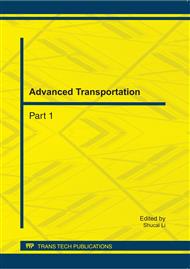p.449
p.453
p.458
p.463
p.471
p.475
p.480
p.485
p.489
Effect of Obstacle on Evacuation Process for Mixed Pedestrians Dynamics
Abstract:
Evacuation time it takes for people to escape out of a room with obstacle was investigated by using a small-grid lattice gas model with different maximum velocities. The relationship between the evacuation time and the size of barrier was explored. The evacuation time decreases when the obstacle is set appropriately under different densities. The numbers of pedestrians running out of the room with and without obstacle at each time step are compared.
Info:
Periodical:
Pages:
471-474
Citation:
Online since:
September 2011
Authors:
Keywords:
Price:
Сopyright:
© 2011 Trans Tech Publications Ltd. All Rights Reserved
Share:
Citation:


